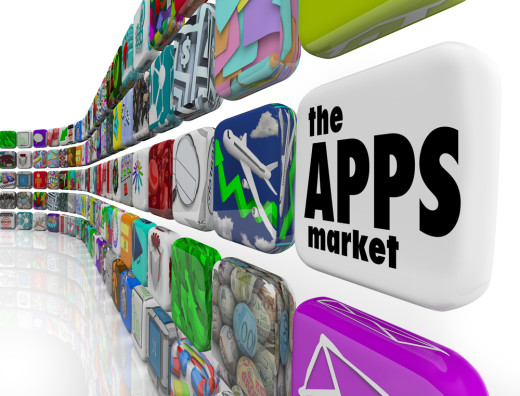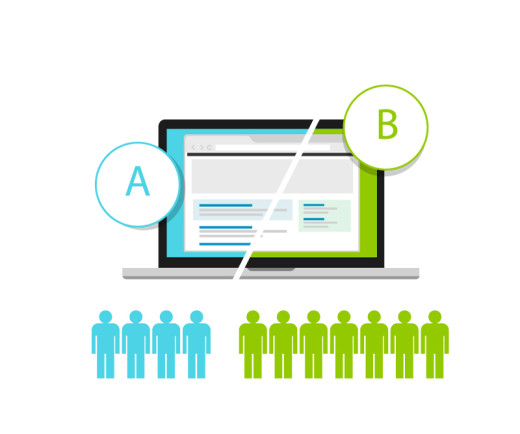econsultancy.com
American author H Jackson Brown Jnr once said, ‘The best preparation for tomorrow is doing your best to read the weekly Econsultancy digital marketing stats round-up.’
That is a fact, which means it’s true.
But let’s not start Googling what Jackson Brown Jnr really said and accusing me of making things up. Just relax and take a look at this fine set of digital marketing stats.
This week we’re covering influencers, mobile shopping, multichannel, the growth of social and much more.
57% of fashion & beauty brands have an influencer marketing strategy
Almost three quarters of fashion and beauty brands are already carrying out influencer marketing, while a further 21% plan to invest in it over the next 12 months.
This is according to a new Fashion & Beauty Monitor report in partnership with Econsultancy, The Rise of Influencers, which explores the role influencers play in the fashion and beauty industry.
Q: Do you currently use influencer marketing as part of your marketing strategy?

One in five expect more than 50% of overall spend to be via mobile
People are increasingly comfortable using their mobile to shop online, with almost three quarters (69%) now browsing or buying this way, a 10% increase since 2013, according to new figures from BuzzCity.
The main reasons people choose to chop via mobile are the variety of products available (18%), the experience of discovery (16%) and the speed of delivery (14%).
Emirates becomes first airline to gain 1m Instagram followers
Recently named the world’s most valuable airline brand, Emirates launched its Instagram channel in November 2013.
In less than three years, the airline’s Instagram content has generated over 5.8m likes and comments.
It has also become the first airline in the world to achieve a seven-figure follower count on the image-sharing network.
Mobile commerce set to rise by 68% in 2016
The number of purchases made via mobile will rise by almost 70% this year, according to new research by Connexity.
Other key findings include:
- Nearly half (42%) of all online orders during Christmas 2016 may be made on a mobile device.
- Up to a third (33%) of all online purchases will be made on a smartphone this year.
- Purchases on tablets are expected to stagnate or slightly decline.
Like-for-like growth for over 80% of retailers, largely thanks to online
80% of UK retailers and leisure operators have registered positive like for like (LFL) annual growth, with 50% delivering LFL growth in excess of 4% year on year, according to JLL’s annual Christmas Trading Update.
As you can see from the chart below, online predominantly drove that growth for many retailers.

57% of IT security workers don't know where payment data is stored or located
More than half of IT security practitioners say their company has had a security or data breach involving payment data an average of four times in the past two years, according to a new survey by Gemalto.
Other key findings include:
- 56% say payment data security is not a top-five security priority for their company.
- Only one third (30%) feels their company allocates enough resources to protecting payment data.
- Less than half (43%) feel their security personnel has the expertise to effectively protect payment data.
- Two thirds (66%) of UK respondents say their companies are either not fully PCI DSS compliant or are only partially compliant.
Retailers failing to offer the omnichannel experience consumers want
59% of Brits are not downloading retail apps because they do not complement and match up to the in-store and website shopping experience, according to new research by Apadmi.
Other key findings include:
- Only 11% of consumers are interacting with their favourite retailers across all channels, including its store, website, and mobile app.
- Nearly a quarter (22%) of consumers only shop in store, 8% solely use a retailer’s website, and 2% use its website and app without visiting the store. Only 1% use a retail app on its own, and 1% go to store and use the mobile app to shop.
- For Brits who use retail mobile apps, the majority (65%) tend to use them at home. Just 31% use them while shopping in-store.
Mobile share of visits to UK retail sites increases to 65%
On average, 64.54% of visits to all ecommerce sites in the UK last year were via mobile phones, compared to 35.46% for desktop, according to new figures from SimilarWeb.
Top UK retail sites’ average monthly mobile share by visits in 2015:
- Amazon – 64%
- eBay – 59%
- Argos – 76%
- Tesco – 71%
- Next – 72%
- Asos – 62%
- John Lewis – 60%
- M&S – 62%
- Currys – 70%
- Boots – 75%
79% of Brits would uninstall ad blockers given more choice over ads
Almost four fifths of adult UK ad-blockers – 9.5m people – would consider getting rid of the software if they had more choice over ads, according to a new report by Teads.
Other key findings include:
- Intrusive adverts (72%) and the impact of ads on site performance (62%) were the main motivators for installing a blocker.
- 71% of ad blockers are installed on mobile.
- Users would consider uninstalling their blockers if they could skip ads at will (57%) and they were more relevant (38%).
There are now 2.31bn social media users worldwide
Almost one-third of the world’s population now uses social media, according to We Are Social’s new Digital in 2016 report.
Other key findings include:
- Social media users are up by 10% YoY, an increase of 219m.
- Taiwan is the ‘most social’ country, with 77% of its total population using Facebook in the past 30 days.
- WhatsApp has grown a massive 50% in the last year.
- Mobile social media users leapt 17%, adding 283m new users.
- South Korea tops rankings for mobile social media usage.
80% choose Facebook for social login
Facebook is by far the most trusted social network when it comes to website authentication, according to a new infographic by Gigya.
Check out the infographic below for more stats:
Digital subscriptions sector registers highest chargeback rates
Nearly a quarter of all UK digital subscriptions result in a chargeback – the return of funds to a consumer that are forcibly initiated by the issuing bank as the instrument used by a consumer to settle a debt – according to new data from Global Risk Technologies.
This is double the rate of the diet, health and beauty and women’s products sector.
One in four UK shoppers uses a smartphone to buy groceries
A quarter of Brits use their mobile to do food shopping, according to Shoppercentric’s new grocery retail index.
Other key findings include:
- Wrong items delivered annoys 39% of online shoppers, paying for delivery 36%. Misleading or wrong promotional details were also a cause of frustration (35%).
- 20% of shoppers now use price comparison sites and 30% look up and use deal/voucher websites. 41% still collect and use vouchers from magazines or flyers that come through the door.
Timely and vaguely relevant stat of the week…
On this day in 1999, the US Senate delivered subpoenas for Monica Lewinsky – who you may have heard speaking at the Festival of Marketing 2015 – and two presidential advisers for private, videotaped testimony in the impeachment trial.



 This means app indexing will strongly influence app store optimization and app marketing in general. Search engine optimization will become more directly tied to ASO, and developers should start taking more advantage of the potentials of indexing their apps.
This means app indexing will strongly influence app store optimization and app marketing in general. Search engine optimization will become more directly tied to ASO, and developers should start taking more advantage of the potentials of indexing their apps. This evolution will make it easier to see what ASO techniques are working, and which ones aren’t. Through this knowledge, developers can better custom-tailor their keywords and long-tail phrases to what consumers are actually looking for.
This evolution will make it easier to see what ASO techniques are working, and which ones aren’t. Through this knowledge, developers can better custom-tailor their keywords and long-tail phrases to what consumers are actually looking for. Many Android developers are already conducting this A/B testing through
Many Android developers are already conducting this A/B testing through 